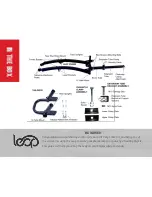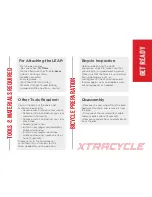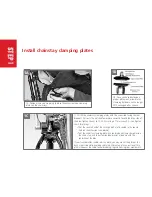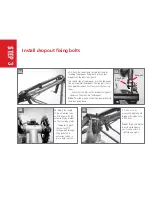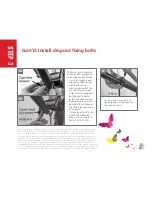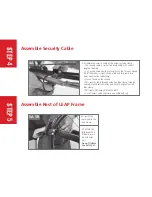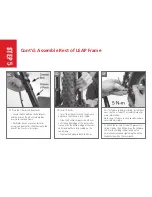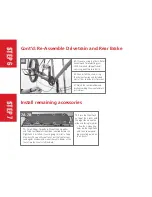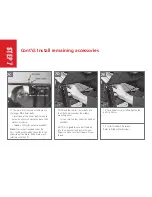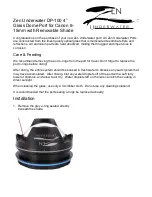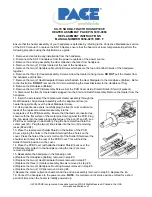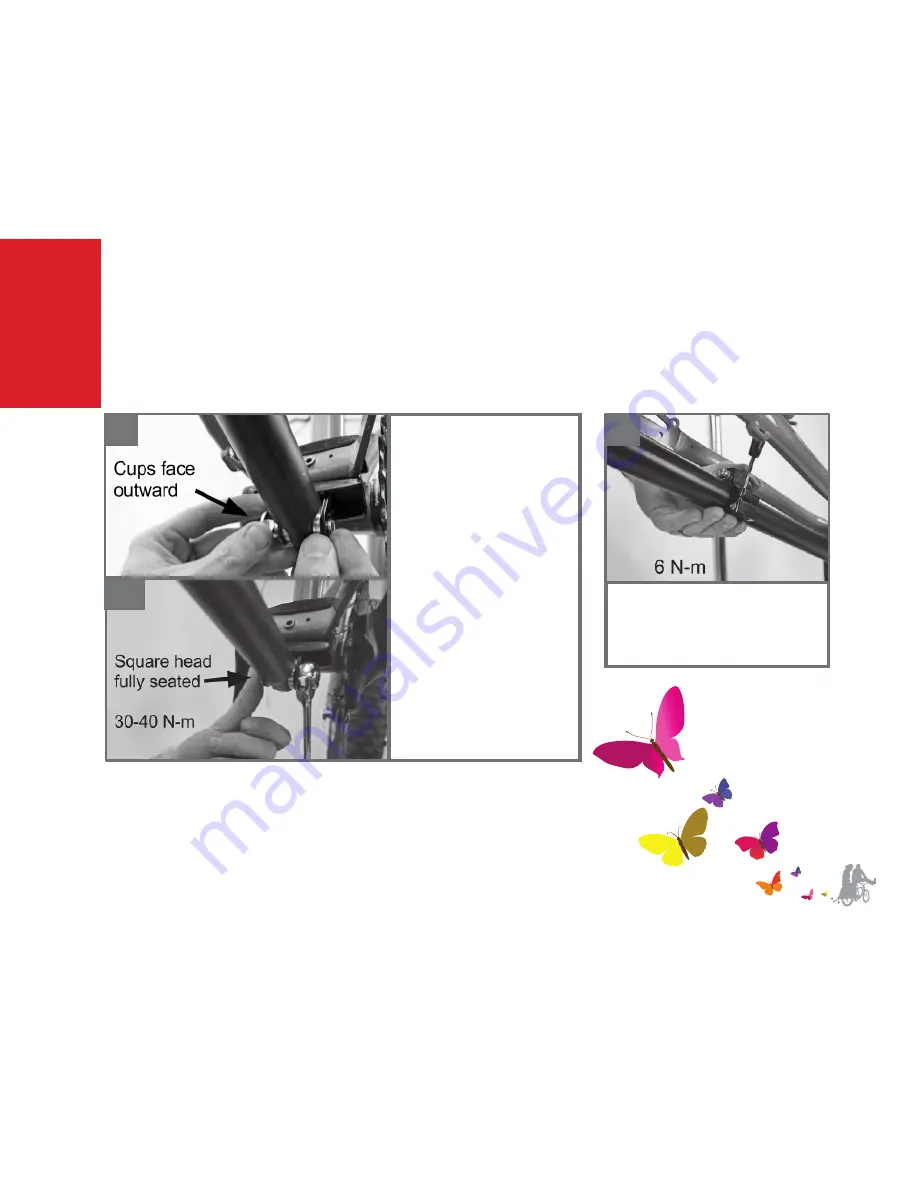
Cont’d: Install dropout fixing bolts
s
tep 3
3D: Remove and re-assemble
the shorter M10 carriage bolt
on the extension tube bracket.
•
Insert the cupped spacers
between the extension tube
and the inside of the
extension tube bracket. The
cups should face outwards.
•
Slide the M10 carriage bolt
back through the bracket,
spacers, and extension tube,
checking to make sure that
the head of the carriage bolt
fully seats in the square hole
on the bracket.
•
Thread the other M10 nyloc
nut onto the carriage bolt
and use a 17mm wrench to
tighten it to 30-40 N-m.
3D
3D
3E: Use a 4mm allen wrench to
tighten the bolts on the extension
tube clamp to 6 N-m.
3E
After a caterpillar buries itself inside its cocoon, it waits to morph into a butterfly. The caterpillar doesn’t simply shrink a bit
and sprout wings. Instead, it sort of disintegrates into a puddle of ooze within the cocoon. New cells are called imaginal
cells start popping up and they are so completely different from the original ooze cells that they are thought to be a virus or
some other form of enemy so the ooze cells begin attacking the imaginal cells. However, even though the imaginal cells are
being killed off for not fitting in, they still keep showing up, more and more of them. Eventually, the imaginal cells begin to
find each other and cluster together. Like attracts like, and the clusters begin to join up with other clusters. Eventually, the
imaginal cells get to be a large enough community and they switch gears from simply being a group of like-minded cells into
the programming cells of the butterfly. Some imaginal cells start changing into wing cells, some start changing into antenna
cells, some start changing into digestive tract cells, and so on. Imaginal cells transform into butterfly anatomy cells. As we all
know, if left alone to do his thing, the butterfly eventually emerges as a completely new entity from the original caterpillar.


